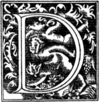BOOK XI.
IFFERENT methods of parting gold from silver, and, on the other hand, silver from gold, were discussed in the last book; also the separation of copper from the latter, and further, of lead from gold as well as from silver; and, lastly, the methods for refining the two precious metals. Now I will speak of the methods by which silver must be separated from copper, and likewise from iron.[1]
The officina, or the building necessary for the purposes and use of those who separate silver from copper, is constructed in this manner. First, four long walls are built, of which the first, which is parallel with the bank of a stream, and the second, are both two hundred and sixty-four feet long. The second, however, stops at one hundred and fifty-one feet, and after, as it were, a break for a length of twenty-four feet, it continues again until it is of a length equal to the first wall. The third wall is one hundred and twenty feet long, starting at a point opposite the sixty-seventh foot of the other walls, and reaching to their one hundred and eighty-sixth foot.
- ↑ The whole of this Book is devoted to the subject of the separation of silver from copper by liquation, except pages 530-9 on copper refining, and page 544 on the separation of silver from iron. We believe a brief outline of the liquation process here will refresh the mind of the reader, and enable him to peruse the Book with more satisfaction. The fundamental principle of the process is that if a copper-lead alloy, containing a large excess of lead, be heated in a reducing atmosphere, above the melting point of lead but below that of copper, the lead will liquate out and carry with it a large proportion of the silver. As the results are imperfect, the process cannot be carried through in one operation, and a large amount of bye-products is created which must be worked up subsequently. The process, as here described, falls into six stages. 1st, Melting the copper and lead in a blast furnace to form "liquation cakes" — that is, the "leading." If the copper contain too little silver to warrant liquation directly, then the copper is previously enriched by melting and drawing off from a settling pot the less argentiferous "tops" from the metal, liquation cakes being made from the enriched "bottoms." 2nd, Liquation of the argentiferous lead from the copper. This work was carried out in a special furnace, to which the admission of air was prevented as much as possible in order to prevent oxidation. 3rd, "Drying" the residual copper, which retained some lead, in a furnace with a free admission of air. The temperature was raised to a higher degree than in the liquation furnace, and the expelled lead was oxidized. 4th, Cupellation of the argentiferous lead. 5th, Refining of the residual copper from the "drying" furnace by oxidation of impurities and poling in a "refining furnace." 6th, Re-alloy and re-liquation of the bye-products. These consist of: a, "slags" from "leading"; b, "slags" from "drying"; c, "slags" from refining of the copper. All of these "slags" were mainly lead oxides, containing some cuprous oxides and silica from the furnace linings; d, "thorns" from liquation; e, "thorns" from "drying"; f, "thorns" from skimmings during cupellation; these were again largely lead oxides, but contained rather more copper and less silica than the "slags"; g, "ash-coloured copper," being scales from the "dried" copper, were cuprous oxides, containing considerable lead oxides; h, concentrates from furnace accretions, crushed bricks, &c.
The discussion of detailed features of the process has been reserved to notes attached to the actual text, to which the reader is referred. As to the general result of liquation, Karsten (see below) estimates the losses in the liquation of the equivalent of 100 lbs. of argentiferous copper to amount to 32-35 lbs. of lead and 5 to 6 lbs. of copper. Percy (see below) quotes results at Lautenthalin the Upper Harz for the years 1857-60, showing losses of 25% of the silver, 9.1% of the copper, and 36.37 lbs. of lead to the 100 lbs. of copper, or say, 16% of the lead; and a cost of 8 6s. per ton of copper. The theoretical considerations involved in liquation have not been satisfactorily determined. Those who may wish to pursue the subject will find repeated descriptions and much discussion in the following works, which have been freely consulted in the notes which follow upon particular features of the process. It may be mentioned that Agricola's treatment of the subject is more able than any down to the 18th century. Ercker (Beschreibung Allerfürnemsten Mineralischen, etc., Prague, 1574). Lohneys (Bericht vom Bergwercken, etc., Zellerfeldt, 1617). Schlüter (Gründlicher Unterricht

